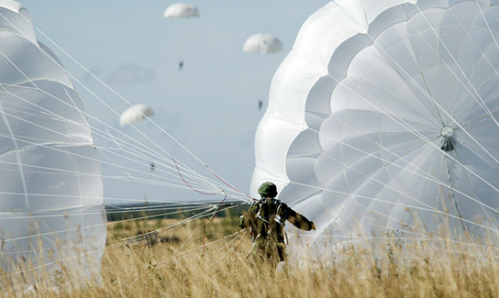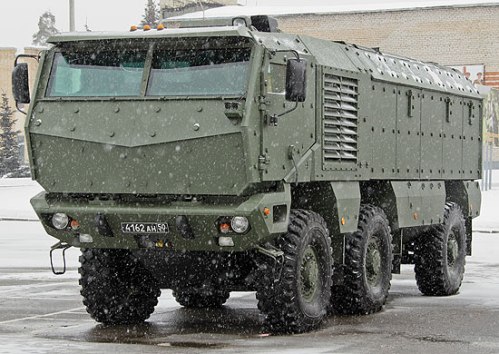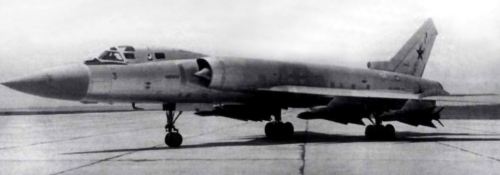October 24 was the MOD’s Day of Special Designation (Spetsnaz) Subunits. For the occasion, KZ featured the Airborne Troops’ storied 45th Independent Guards Orders of Aleksandr Nevskiy and Kutuzov Special Designation Brigade.
The 45th was a regiment as recently as 2014, but — as VDV Commander Shamanov promised — it is now a brigade. Maybe it’s expanded in size with its upgraded status.
We’ve heard nothing yet about whether the 45th was deployed in a deep reconnaissance role prior to (and during) Moscow’s air operation against the various enemies of Syrian leader Assad. It’s a pretty good bet it did and is.
KZ’s story describes at length the process of joining the brigade. No one, it says, ends up in the 45th by accident. All are willing volunteers, and far from every would-be VDV Spetsnaz soldier becomes one.
The very strict selection process including physical and psychological examinations begins with draftees in the Voyenkomat, and continues once conscripts reach the unit. Besides speed, strength, and endurance tests, candidates have to “spar” in three 3-minute fights. KZ writes:
“Here’s where the quality of determination is revealed: this is when a candidate, taking a blow, falls, but then gets up and continues to fight to the end.”
The article reports DOSAAF helps train and identify candidates. Belgorod Oblast’s DOSAAF had an entire company of young men accepted into the 45th last year. Brigade officers look for potential contractees when they visit VDV and other military units. However, the article doesn’t provide a current breakdown of conscripts and contractees in the brigade.
The article does say 90 percent of its contractees conclude a second contract. The average contractee makes 35,000-40,000 rubles per month after three years. They are eligible for MOD mortgage and non-resident higher education programs. The brigade is, KZ writes, a special kind of collective, a family, and officers and soldiers don’t want to leave it.
The article describes the brigade’s jump training. Traditional D-10, and Arbalet-1 and newer Arbalet-2 ram-air parachutes are used. About 25 D-10 jumps are needed before trying Arbalet. Some 20 days of training are required on the Arbalet-2. Troop testing for this chute was done in the 45th. A skilled paratrooper can reportedly “plane” up to 17 km in a jump with the Arbalet. The brigade’s soldiers make about 10 training jumps annually.

Not Much Room Left on the Brigade’s Memorial Wall (photo: 45pvdv.ru)
Subunit commanders in the 45th remind their soldiers that, “Reconnaissance ends when the shooting starts.” Especially deep reconnaissance. The brigade’s primary mission is reconnoitering targets, transmiting their coordinates, and leaving without detection.
But, KZ asks Hero of Russia and deputy commander Lieutenant Colonel Vladimir Seliverstov, with his 15 years of service in the 45th, can’t 21st century technology — satellites and UAVs — replace deep reconnaissance on the ground? He replies:
“Not fully. First, a special designation group will direct strike assets against a number of strategic targets no matter what. Second, after air strikes and artillery preparation, a ground operation begins where special designation subunits will be first to act conducting sabotage and ambushes. Spetsnaz always work precisely…”
“In recent years, the list of missions put on Spetsnaz has increased substantially. Some of which I never thought about earlier will be ours.”
Seliverstov notes that the men of the 45th had to equip themselves in 2000, but are now fully outfitted by the state.
KZ writes that an independent reconnaissance detachment from the brigade took part in the operation to “return Crimea to Russia” in the spring of 2014.
The brigade has 14 Heroes of Russia, including four still serving.
A little searching turned up other articles to round out the picture of the 45th. They mostly give the brigade’s history and tend to repeat each other.
There is KZ again, from 2011.
This site gives a bio on current brigade commander Colonel Pankov. The 47-year-old officer is, of course, career Spetsnaz. He fought in both Chechen campaigns, and commanded Spetsnaz groups and detachments before becoming deputy commander of the 45th in 2000. He received his Hero of Russia award in 2001.

Colonel Vadim Pankov (photo: Krasnaya zvezda)
This one reports that Pankov took command in August 2012 and it has some useful links.
Kubinka’s site covered the brigade’s 20th anniversary in the summer of 2014, and it has some good photos. The brigade was still a regiment at that point.
The English wiki on the 45th is a little incomplete and a little dated. The Russian version is more useful, and has a number of sources and links.









